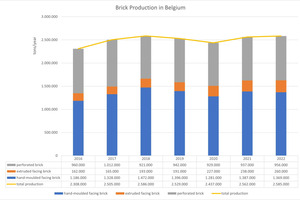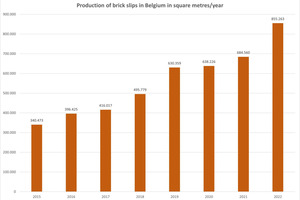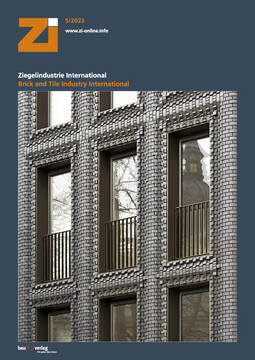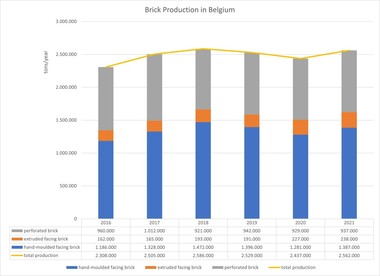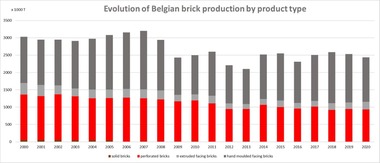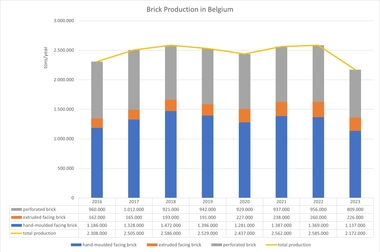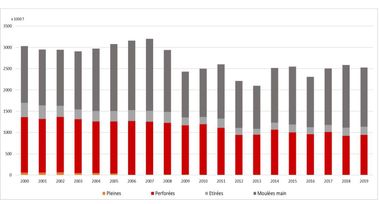Belgian brick industry resilient in 2022
In the face of the outbreak of war in Ukraine and the unprecedented energy crisis, the Belgian brick industry proved to be very resilient. This is the verdict of the Belgian brick industry association Belgische Baksteenfederatie in its annual report.
Total brick production in Belgium amounted to around 2.58 million tonnes, almost 1 percent more than in the previous year. 956,000 tonnes of backing bricks and 1,629,300 tonnes of facing bricks were produced. The production of brick slips recorded a further increase of about 20 percent to 855,263 m² in 2022. For the first time, the production of narrower facing bricks in eco-format was also recorded, which amounted to 941,382 m².
Exports amounted to 1,123,246 tonnes, representing about 43 percent of total production and an increase of 2 percent. The export figures were compiled on the basis of a member survey and data from the National Bank of Belgium (NBB). Exports were mainly to neighbouring countries. The United Kingdom remained the most important export country for facing bricks in 2022. Brick imports increased compared to the previous year, reaching 290,786 tonnes. This means that imports account for about 11.2 percent of Belgian production (source: NBB).
The Belgian economy, driven on the one hand by the ongoing catch-up process after the Covid crisis, but slowed on the other by rising commodity and energy prices, the disruption of international supply chains and uncertainty due to the war in Ukraine, grew by 3.5 percent in 2022 (Federal Planning Bureau and National Bank of Belgium (NBB)).
According to a study by Embuild, the Belgian Construction Association, the construction sector in Belgium recorded growth of 1.5 percent. The good performance of the Belgian construction sector last year can be attributed to several factors, including the reduction in the VAT rate for demolition and reconstruction, the strong demand for new buildings and renovations during the pandemic, which lasted until 2022, and various regional measures to promote energy-efficient renovations. However, there are several indications that construction activity will slow down in 2023. Bottlenecks such as high energy, material and labour costs, the war in Ukraine and the tight labour market are also creating uncertainty in the construction industry.
The outlook for construction in 2023 is uncertain. The number of building permits issued in Belgium in 2022 for both renovations and new buildings was lower than in 2021. According to STATBEL, the belgian statistical office, the number of permits for new buildings amounted to 51,584 units, a decrease of 10.5 percent compared to 2021. Permits for single-family homes decreased by 9 percent to 25,591 units, while the number of permits for flats decreased by another 12 percent to 25,993 units. The number of approved renovations of residential buildings in Belgium fell by 14 percent to 29,411 units (STATBEL). As the number of building permits issued for new construction projects is a good leading indicator for construction activity, this points to an expected slowdown in construction activity in 2023. Overall, the association says 2023 promises to be a challenging year.

